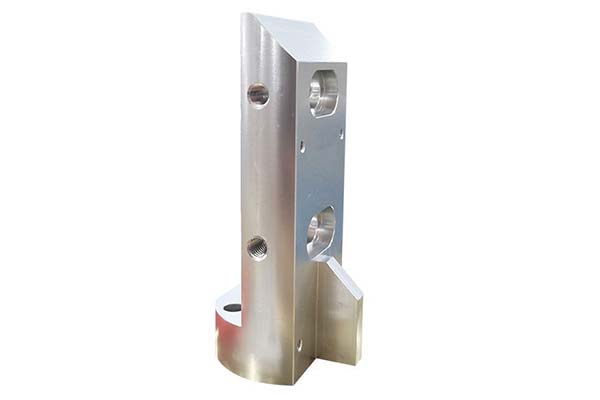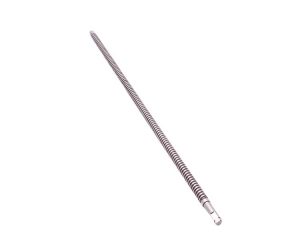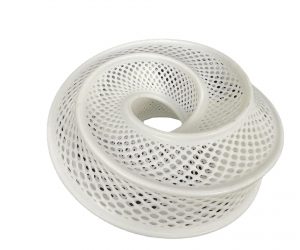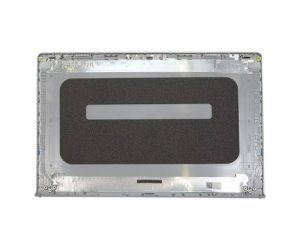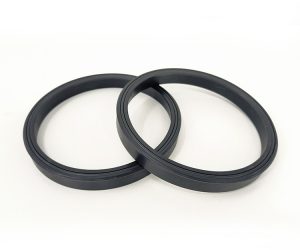Yigu: Titanium machining is known for its difficulties, making it a tough nut to crack for many manufacturers. One of the biggest headaches is excessive tool wear, with tools often lasting only a fraction of the time they do when machining aluminum or steel. Achieving the right surface finish is another battle, as titanium's unique properties can lead to poor surface integrity and even cracks if not handled properly. Setting the correct cutting parameters is also a constant struggle, with even small deviations resulting in increased costs and wasted materials. In this guide, we'll tackle these challenges head - on and provide a comprehensive overview of titanium machining.
Machining Processes: Choosing the Right Method for Titanium
Common Machining Operations
Turning is a widely used process for titanium, especially for creating cylindrical parts like shafts and rods. When turning Ti - 6Al - 4V (the most common titanium alloy), a carbide insert with a positive rake angle can achieve a surface roughness of Ra 1.6 - 3.2 μm. However, due to titanium's low thermal conductivity, the cutting zone can reach temperatures of 800 - 1000°C, so proper coolant application is crucial.
Milling titanium requires rigid machines and sharp tools. End mills with 4 flutes are preferred for better chip evacuation, and high - speed milling (though at lower speeds than for aluminum) can reduce heat buildup. A 10mm carbide end mill can mill Ti - 6Al - 4V at a spindle speed of 3000 - 5000 RPM, with a feed rate of 100 - 200 mm/min.
Drilling titanium is challenging because of the material's tendency to grab the drill bit. Using a drill with a 135° point angle and a slow feed rate (0.05 - 0.1 mm/rev) can help prevent this. Grinding is often used for finishing titanium parts, with a surface finish of Ra 0.025 - 0.1 μm achievable, which is essential for medical implants.
Advanced Processes
Wire EDM (Electrical Discharge Machining) is ideal for complex shapes in titanium that are hard to machine with conventional methods. It uses a thin wire to cut through the material, with a precision of ±0.001 mm, making it suitable for aerospace components with intricate geometries.
Laser Cutting can be used for thin titanium sheets (up to 3mm thick), offering a kerf width of 0.1 - 0.3 mm. It's a non - contact process, reducing the risk of material deformation, but it can cause a heat - affected zone (HAZ) of 0.1 - 0.5 mm, which may need post - processing.
Tool Selection: Finding the Right Tools for Titanium
Tool Materials
Carbide tools are the workhorses of titanium machining. Cemented carbide with a high cobalt content (10 - 15%) offers good toughness, while grades with fine grain sizes provide better wear resistance. For example, a WC - Co carbide tool with a grain size of 0.5 - 1 μm can last 2 - 3 times longer than a coarse - grained carbide when machining Ti - 6Al - 4V.
Ceramic tools (such as alumina - based ceramics) can handle higher cutting speeds than carbide, up to 100 - 200 m/min, but they are more brittle. They are best suited for finishing operations where the cutting forces are low. Polycrystalline diamond (PCD) tools are extremely hard but can react with titanium at high temperatures, so they are only used for specific low - speed finishing applications.
Tool Geometry and Coatings
Tool geometry plays a vital role in titanium machining. A positive rake angle (5° - 10°) reduces cutting forces, while a large relief angle (7° - 12°) minimizes friction between the tool and the workpiece. The cutting edge should be sharp but not too keen to avoid chipping.
Coatings like TiN (Titanium Nitride) and TiAlN (Titanium Aluminum Nitride) can extend tool life by 50 - 100%. TiAlN coatings are particularly effective, as they have good heat resistance, withstanding temperatures up to 800°C. A TiAlN - coated carbide insert can machine 50 - 100 more titanium parts than an uncoated insert before needing replacement.
Material Properties: Understanding Titanium's Behavior
Key Alloys and Their Properties
Ti - 6Al - 4V is the most widely used titanium alloy, accounting for about 50% of all titanium applications. It has a hardness of 30 - 35 HRC, a tensile strength of 900 - 1100 MPa, and excellent corrosion resistance. Its thermal conductivity is only 6.7 W/m·K, about 1/5 that of steel, which means heat doesn't dissipate easily, leading to high cutting temperatures.
Ti - 5Al - 2.5Sn is another common alloy, used in aerospace applications due to its high strength at elevated temperatures. It has similar machining characteristics to Ti - 6Al - 4V but is slightly more prone to work hardening.
Challenges Posed by Properties
Titanium's low elastic modulus (110 GPa) makes it springy, causing it to deflect under cutting forces. This can lead to poor dimensional accuracy, so rigid fixturing is essential. Work hardening is a significant issue; even a small amount of deformation can increase the material's hardness by 20 - 30%, making subsequent machining more difficult.
Its corrosion resistance is a advantage in many applications but can make machining harder, as the protective oxide layer can wear down tools. Titanium also has a high chemical affinity for cutting tools at high temperatures, leading to built - up edge (BUE) formation, which degrades surface finish.
Surface Finish: Achieving High Quality in Titanium Parts
Measuring and Achieving Surface Roughness
Surface roughness in titanium machining is critical, especially for medical implants where a smooth surface reduces the risk of infection. For most aerospace parts, an Ra value of 1.6 - 3.2 μm is acceptable, but medical implants often require Ra 0.05 - 0.2 μm. Grinding with a fine grit wheel (120 - 240 grit) can achieve these low Ra values.
Tool marks are a common problem, caused by tool wear or improper feed rates. Using a fresh tool for finishing passes and optimizing the feed rate to match the tool's capabilities can reduce tool marks by 70 - 80%. Polishing is often used as a post - processing step, with electrochemical polishing able to reduce Ra values by 50 - 60% compared to mechanical polishing.
Ensuring Surface Integrity
Surface integrity refers to the quality of the surface layer, including residual stresses and microstructural changes. Titanium parts with poor surface integrity are prone to fatigue failure, which is dangerous in aerospace and medical applications. To maintain surface integrity, cutting speeds should be kept low enough to prevent excessive heat, and coolant should be applied directly to the cutting zone.
Residual stresses can be minimized by using climb milling instead of conventional milling, as it generates lower tensile stresses. Shot peening after machining can also introduce beneficial compressive stresses, increasing the part's fatigue life by 2 - 3 times.
Cutting Parameters: Optimizing for Titanium
Key Parameters
Cutting speed for titanium is much lower than for aluminum. For carbide tools, a cutting speed of 30 - 100 m/min is typical for Ti - 6Al - 4V, while ceramic tools can handle 100 - 200 m/min for finishing. For example, a 10mm carbide end mill machining Ti - 6Al - 4V at 50 m/min would have a spindle speed of 1592 RPM (calculated as (1000 × cutting speed) / (π × tool diameter)).
Feed rate should be 0.05 - 0.2 mm per tooth for carbide tools. A 4 - flute end mill with a feed rate of 0.1 mm per tooth and a spindle speed of 2000 RPM would have a feed rate of 800 mm/min (feed rate = spindle speed × number of flutes × feed per tooth).
Depth of cut is typically 0.5 - 2 × the tool diameter for roughing. For a 10mm end mill, a depth of cut of 5 - 10 mm is suitable for roughing Ti - 6Al - 4V, while finishing passes should use a depth of 0.1 - 0.5 mm.
Coolant and Chip Management
Coolant use is essential in titanium machining to reduce heat and flush away chips. A high - pressure coolant system (20 - 40 bar) is recommended, as it can penetrate the cutting zone more effectively. Oil - based coolants are better than water - based ones for titanium, as they provide better lubrication and prevent corrosion.
Chip formation is important; long, stringy chips can 缠在 the tool and workpiece, causing damage. Using a chip breaker on the tool can break the chips into small, manageable pieces, reducing the risk of entanglement. The chip load should be adjusted to ensure continuous chip formation, avoiding the discontinuous chips that can cause vibration.
Applications: Where Titanium Machining Shines
Aerospace and Medical
The aerospace industry is the largest user of titanium parts, with applications including turbine blades, landing gear components, and airframe structures. Titanium's high strength - to - weight ratio reduces aircraft weight, improving fuel efficiency by 5 - 10%. Machining these parts requires tight tolerances (±0.005 - 0.01 mm) and excellent surface finish to ensure safety.
Medical implants (such as hip and knee replacements) are another major application. Titanium is biocompatible, meaning it doesn't react with the body, and its modulus of elasticity is close to that of bone, reducing stress shielding. Machining medical implants requires extreme precision, with tolerances as tight as ±0.001 mm for some components.
Other Industries
In the automotive industry, titanium is used in high - performance parts like exhaust systems and valve springs, reducing weight and improving durability. The marine industry uses titanium for propellers and hull components because of its excellent corrosion resistance in saltwater.
Sports equipment such as bicycle frames and golf clubs also benefit from titanium's lightweight and strong properties. Machining these parts often requires complex geometries, making 5 - axis CNC machines essential.
Yigu Technology, as a plastic metal parts custom manufacturing Supplier, has extensive experience in titanium machining. We use high - quality carbide tools with TiAlN coatings and optimize cutting parameters to ensure efficient and precise machining. Our focus on surface finish and tight tolerances allows us to produce titanium parts for aerospace and medical industries, meeting the most stringent requirements.
FAQ
- Why is titanium so hard to machine compared to steel?
- Titanium has low thermal conductivity, causing heat to build up in the cutting zone and wear tools quickly. It also work - hardens easily, has a high chemical affinity for tool materials at high temperatures, and its low elastic modulus leads to deflection, making it harder to machine than steel.
- What coolant is best for titanium machining?
- Oil - based coolants with extreme pressure additives are best. They provide better lubrication than water - based coolants, reducing friction and tool wear. A high - pressure delivery system (20 - 40 bar) ensures the coolant reaches the cutting zone, keeping temperatures low and flushing away chips.
- How can I extend the tool life when machining Ti - 6Al - 4V?
- Use sharp carbide tools with TiAlN coatings, keep cutting speeds low (30 - 60 m/min), and use a high - pressure coolant system. Reduce the feed rate if you notice signs of tool wear, and ensure the tool has a positive rake angle to reduce cutting forces. Also, minimize tool overhang to reduce vibration, which accelerates wear.
